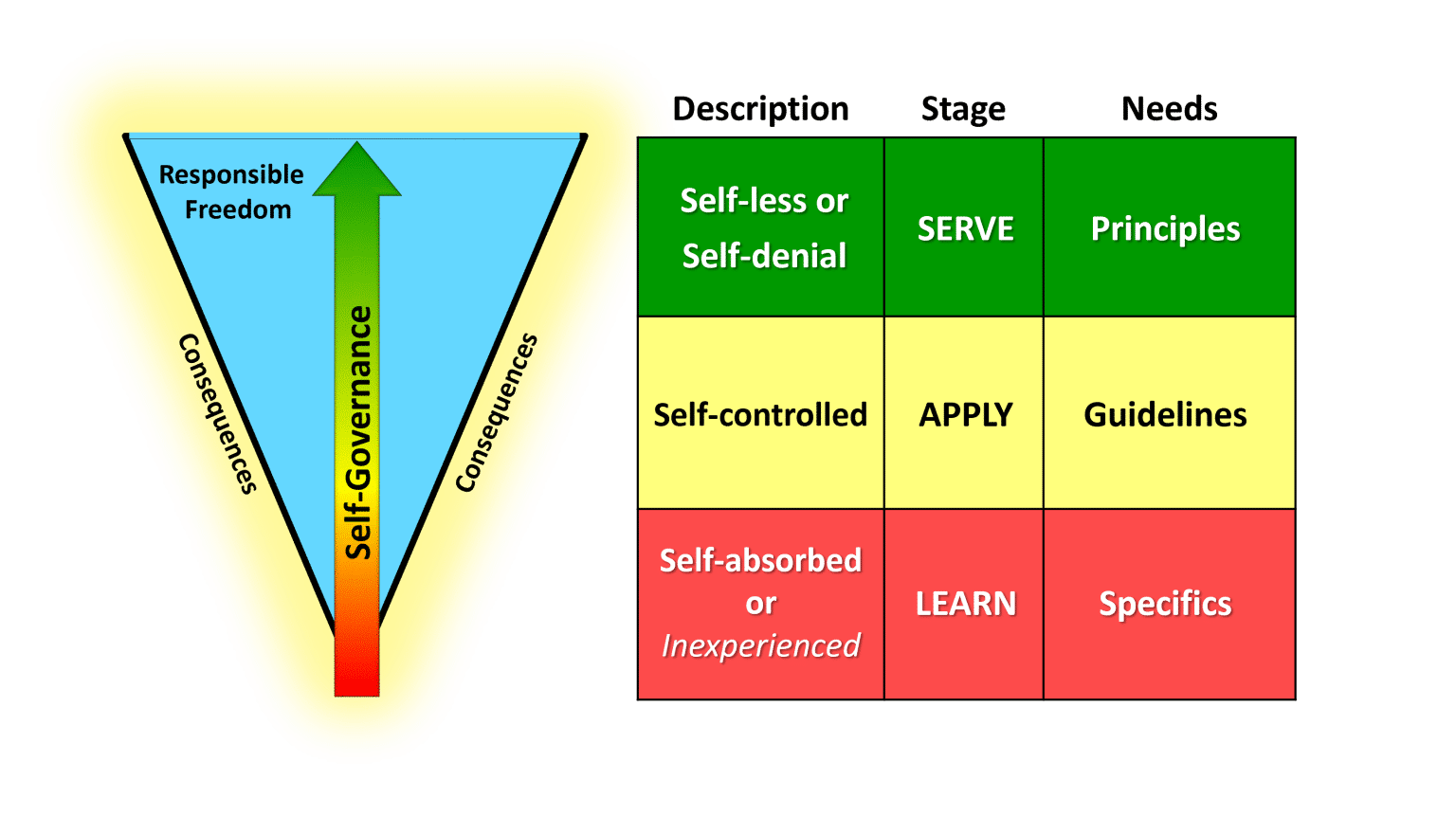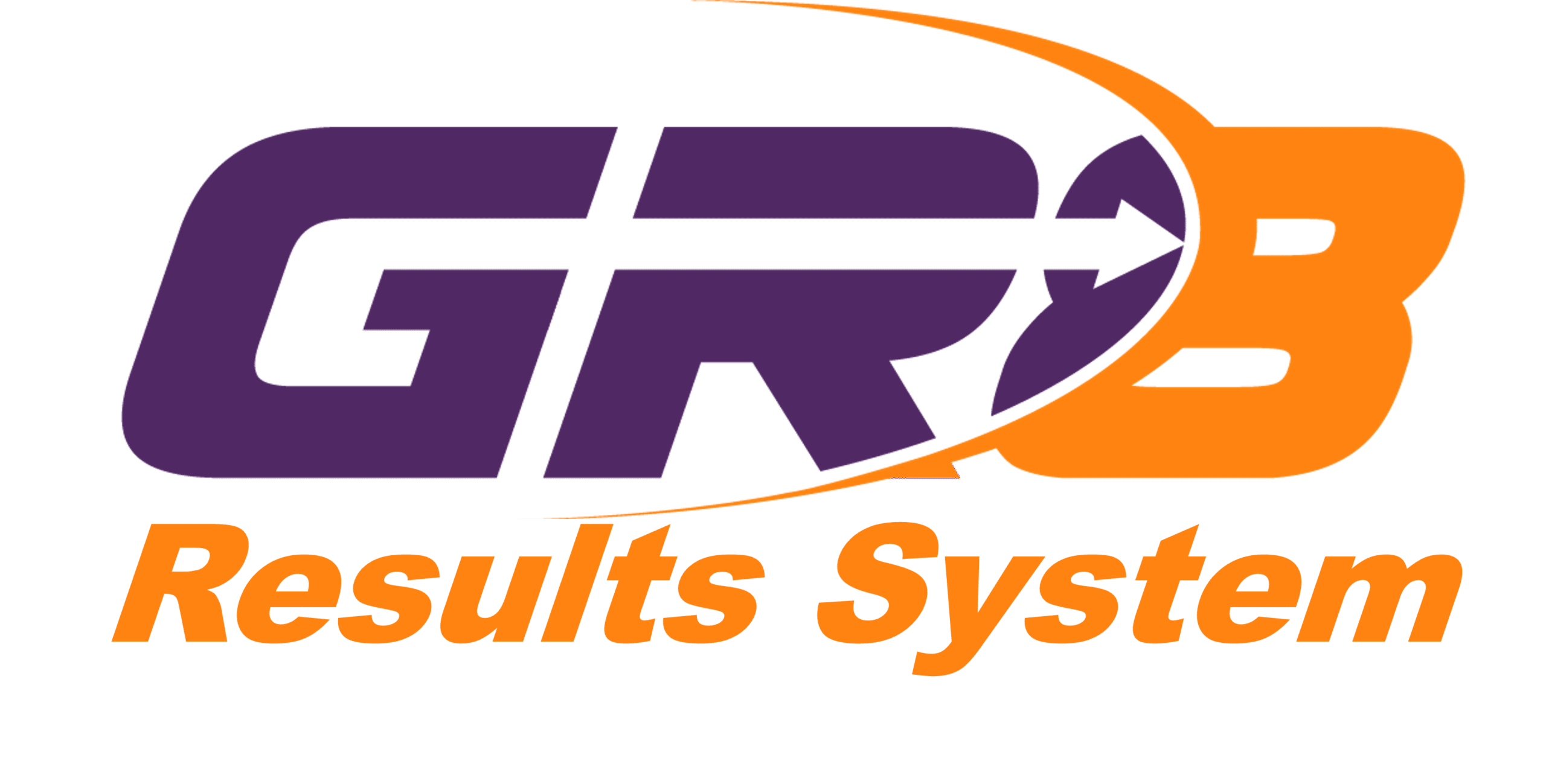The Freedom V is an effective concept and tool as it illustrates the connection between self-governance and freedom. The V graphic speaks for itself, and the table to the right in the image below offers additional details.
The key components are the V shape and the arrow in the center.

Freedom V Graphic
First, the V shape. The lines on the right and left represent boundaries that define the limits of acceptable behavior. It’s important to ensure these boundaries are clear and unmistakable—there should be no room for ambiguity. Make sure the boundaries are well-known and clearly communicated.
Second, the space within the V signifies the realm of Responsible Freedom. This is where freedom is exercised properly, staying within the framework of accepted norms. As you move up the V shape, the level of freedom increases. The structure, whether benevolent or harmful, will still maintain this V shape. Even in the most oppressive regimes or organizations, individuals who stay within the set boundaries can enjoy more freedom.
Third, outside the V, there are consequences for crossing the boundaries. When you exceed these limits, you enter the domain of Irresponsible Freedom. This holds true for both positive and negative value systems. Even in harmful organizations, there are still boundaries. It’s crucial to clearly communicate the consequences when establishing the boundaries.
Lastly, the arrow in the middle symbolizes self-governance. The color on the arrow indicates the degree of self-governance a person demonstrates. At the bottom, self-governance is insufficient, while yellow and green show an increase in self-governance as you move upwards. This progression directly relates to the amount of freedom a person is granted.
Self-Governance categorized in 3 levels
When we follow the rules set by the structure and stay within its boundaries, we unlock greater responsible freedom. In other words, the more we practice self-governance, the more freedom becomes available.
In the graph above, the table to the right offers additional perspectives on the Freedom V. For example, you can categorize self-governance into three distinct levels, which may overlap:
- Self-absorbed – This is the bottom section, from the red area into the yellow on the self-governance arrow. It represents someone who is either inexperienced, lacks knowledge on a topic, or ignores what is right. This stage is the Learning Stage, where individuals need specific rules because tighter controls are necessary. However, this doesn’t mean ignoring the “why” behind the rules.
- Self-controlled – This is the middle yellow area, moving into the green. It represents someone who demonstrates an adequate level of self-governance. This can be measured generally or more specifically in individual work or life situations. This is the Apply Stage, where individuals primarily need guidelines because they understand the rules.
- Selfless or Self-denial – This is the top section of the self-governance arrow, where individuals focus on benefiting others. This is the Serve Stage, where people operate based on principles and know how to apply these principles to various life situations on a broader scale.
The Freedom V can be applied to any structure, and it’s particularly effective for families and organizations that hold strong values.
An Example - Using It With Children
A person with self-governance takes others into account and understands the impact of their actions on those around them. They remain within the V as long as the freedom they exercise within it aligns with good values.
Tight Boundaries at First
Imagine you're responsible for a baby and you're a wise parent. You establish tight boundaries because the baby needs to gain knowledge or experience about how things work. You place them in controlled environments like a crib or playpen, watch over them, and help protect them from significant harm. At the same time, you allow them enough freedom to see if they can learn to stay within those boundaries.
Expanding Boundaries
As the baby grows into a toddler, you still maintain relatively tight boundaries. They’ll be learning to stay within the limits of the freedom you give them, and they’ll experience the consequences if they don’t. The rules and expectations you set are an invitation to live wisely, not a way to assert your control. You encourage them to follow the rules because it helps them avoid negative consequences. If you notice them approaching a boundary, you may offer a warning, but you allow them to make the choice if the consequences aren’t too severe.
Expansive Boundaries
As the child grows older, their boundaries expand as they demonstrate the ability to make good choices. Since you’ve taught them how to recognize boundaries for themselves, you hope they’ll make wise decisions when they’re at school, with friends, or on their own. The more they demonstrate self-governance, the more freedom you grant them. If they cross a boundary, you reduce their freedom by moving them down the V.
For example, you might tell an older child, “Go where you want, be safe, and be home by sunset.” If they don’t return on time and it’s determined to be willful disobedience, you move them down the Freedom V until they can prove they’ll return by the agreed-upon time.
Reason for the Boundaries
The goal is for the child to eventually set their own boundaries within the framework you've outlined.
Remember, self-governance means “delaying immediate gratification for future benefit.” A simple, practical way to understand self-governance is when you set boundaries for yourself rather than relying on authorities to do so for you.
You show value for others when you commit to helping them become self-governing. You can’t do it for them. As much as you may want to control, sometimes it’s best to allow people to cross the boundary and face the consequences, as long as they’re not too severe for them or the organization. You can control the people you lead, but often, it’s not the best course of action. Exercising personal freedom is a key part of what it means to be human, and learning to be self-governing often comes through experiencing consequences.
If you learn to pre-decide, you’ll become more self-governing and face fewer consequences.
